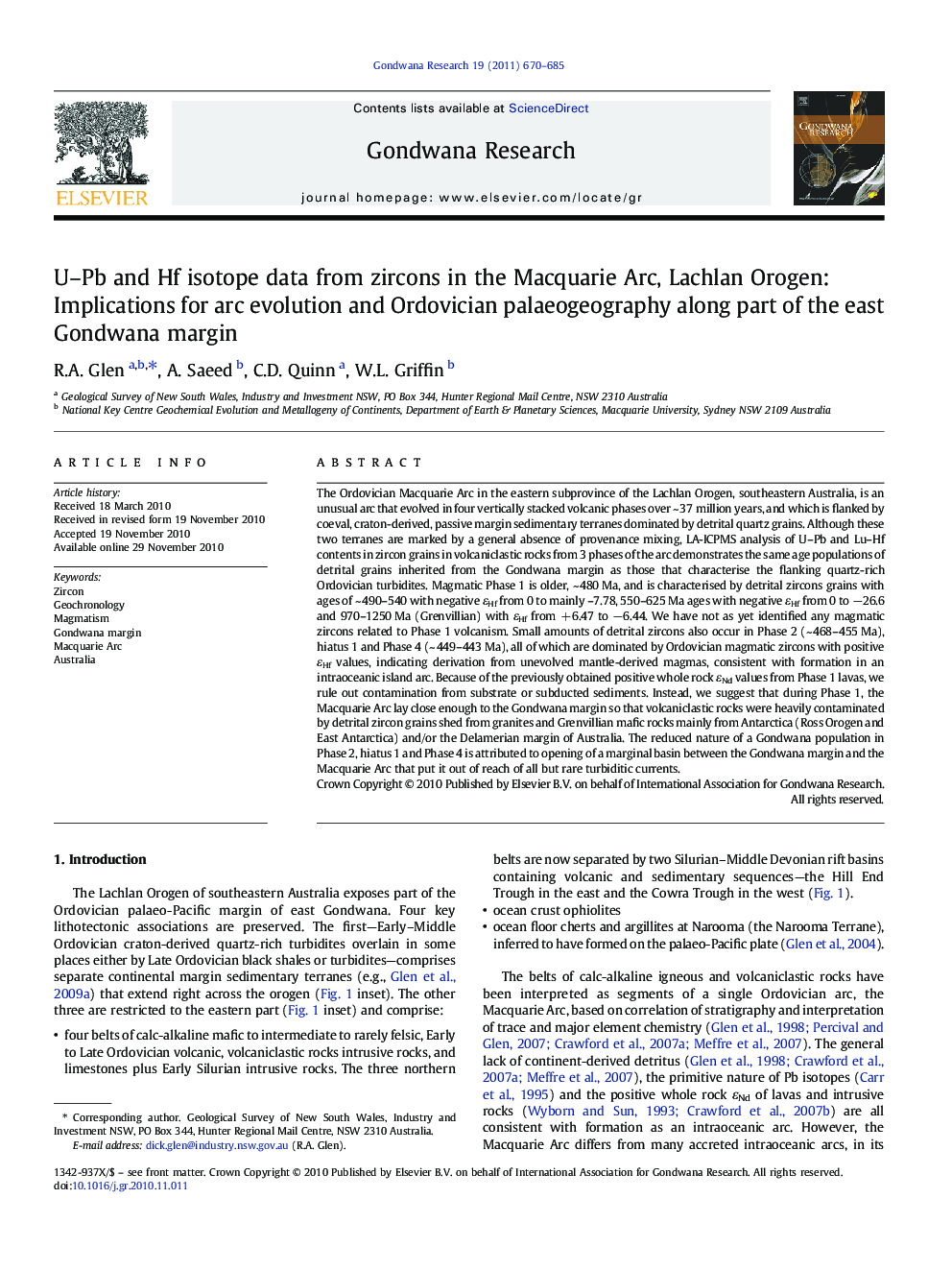| کد مقاله | کد نشریه | سال انتشار | مقاله انگلیسی | نسخه تمام متن |
|---|---|---|---|---|
| 4727208 | 1356365 | 2011 | 16 صفحه PDF | دانلود رایگان |

The Ordovician Macquarie Arc in the eastern subprovince of the Lachlan Orogen, southeastern Australia, is an unusual arc that evolved in four vertically stacked volcanic phases over ~ 37 million years, and which is flanked by coeval, craton-derived, passive margin sedimentary terranes dominated by detrital quartz grains. Although these two terranes are marked by a general absence of provenance mixing, LA-ICPMS analysis of U–Pb and Lu–Hf contents in zircon grains in volcaniclastic rocks from 3 phases of the arc demonstrates the same age populations of detrital grains inherited from the Gondwana margin as those that characterise the flanking quartz-rich Ordovician turbidites. Magmatic Phase 1 is older, ~ 480 Ma, and is characterised by detrital zircons grains with ages of ~ 490–540 with negative εHf from 0 to mainly –7.78, 550–625 Ma ages with negative εHf from 0 to −26.6 and 970–1250 Ma (Grenvillian) with εHf from + 6.47 to −6.44. We have not as yet identified any magmatic zircons related to Phase 1 volcanism. Small amounts of detrital zircons also occur in Phase 2 (~ 468–455 Ma), hiatus 1 and Phase 4 (~ 449–443 Ma), all of which are dominated by Ordovician magmatic zircons with positive εHf values, indicating derivation from unevolved mantle-derived magmas, consistent with formation in an intraoceanic island arc. Because of the previously obtained positive whole rock εNd values from Phase 1 lavas, we rule out contamination from substrate or subducted sediments. Instead, we suggest that during Phase 1, the Macquarie Arc lay close enough to the Gondwana margin so that volcaniclastic rocks were heavily contaminated by detrital zircon grains shed from granites and Grenvillian mafic rocks mainly from Antarctica (Ross Orogen and East Antarctica) and/or the Delamerian margin of Australia. The reduced nature of a Gondwana population in Phase 2, hiatus 1 and Phase 4 is attributed to opening of a marginal basin between the Gondwana margin and the Macquarie Arc that put it out of reach of all but rare turbiditic currents.
Figure optionsDownload as PowerPoint slideResearch Highlights
► Zircons in Phase 1 volcaniclastics in the Macquarie Arc were inherited from Gondwana.
► However, zircons in phases 2 to 4 are largely magmatic, derived from mantle melts.
► This change reflects opening of a marginal sea behind the arc.
Journal: Gondwana Research - Volume 19, Issue 3, April 2011, Pages 670–685